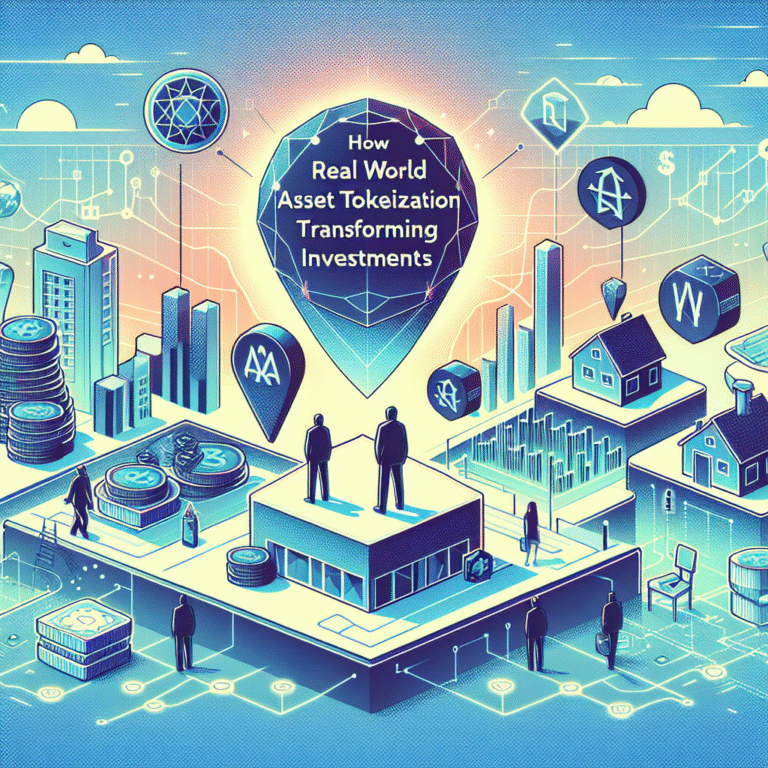How to Trick AMMs in DeFi (Yield Farming Hacks and DEX Loopholes – 2025 Mega Guide)
This mega-guide is designed to show you exactly how you can make passive and stable income using some of the rare yield farming hacks and dex loopholes. Whether you’re an advanced DeFi veteran or a curious beginner, you’ll learn how to:
-
Spot inefficiencies in DEX liquidity pools
-
Exploit AMM loopholes for arbitrage and yield farming
-
Use Solana and Sui’s ecosystems for high-speed income hacks
-
Build a stable passive income machine in crypto
By the end, you’ll see AMMs not as abstract math formulas, but as programmable engines for wealth generation.
Introduction: Why AMMs Are the Hidden Engine of DeFi
If you’ve ever swapped tokens on Uniswap, PancakeSwap, Raydium (Solana), or Cetus (Sui), you’ve used an Automated Market Maker (AMM) without even realizing it. AMMs have quietly become the backbone of decentralized finance (DeFi). Instead of matching buyers and sellers like traditional order books, AMMs rely on liquidity pools and mathematical formulas to set token prices.
This algorithmic approach is both a strength and a weakness. On one hand, AMMs allow 24/7 permissionless trading with near-instant liquidity. On the other hand, because they are entirely formula-driven, they are predictable. And predictability means opportunity.
In fact, some of the most consistent sources of passive crypto income in 2025 come from exploiting these predictable patterns. Traders, yield farmers, and even AI bots are now taking advantage of DEX loopholes, AMM inefficiencies, and DeFAI-powered strategies to earn stable, long-term profits.
What is an AMM (Automated Market Maker)?
At its core, an AMM is just math.
The most famous formula is from Uniswap v2:
x×y=kx \times y = k
Where:
-
x = amount of Token A in the pool
-
y = amount of Token B in the pool
-
k = constant
Whenever someone buys Token A, its amount in the pool decreases, which means its price rises. This ensures supply and demand balance, but it also creates slippage and opportunities for arbitrage.
Other AMM designs include:
-
Stablecoin AMMs (Curve, Saber): optimized for near-zero slippage swaps between USDT, USDC, DAI.
-
Weighted Pools (Balancer): allow multiple tokens in one pool with custom weights.
-
Concentrated Liquidity (Uniswap v3, Orca Whirlpool, Cetus on Sui): let LPs provide liquidity in narrow ranges, amplifying fee income.
Why AMMs Are Predictable (and Exploitable)
Unlike centralized exchanges where order books are dynamic and human-driven, AMMs are:
-
Deterministic – you can calculate prices in advance
-
Transparent – liquidity and pool sizes are public
-
Immutable – once deployed, many pools can’t change formulas
This predictability creates loopholes:
-
Price mismatches across pools (triangular arbitrage)
-
Temporary depegs of stablecoins (buy low, sell high)
-
Incentive farming (selling inflationary rewards before others)
-
Sniping new pools before liquidity stabilizes
In short: AMMs are math games, and math games can be gamed.
Why Passive Income from AMMs is Different
Most people think passive income in crypto = staking tokens or holding stablecoins. But AMMs offer:
-
Trading Fee Income → LPs earn a share of every swap.
-
Farming Rewards → Many DEXs incentivize LPs with native tokens.
-
Arbitrage Profits → Exploiting pool inefficiencies.
-
DeFAI Automation → Bots and AI strategies farming on your behalf.
What’s special is that you don’t need to predict markets. You’re not betting on “will BTC go up or down.” Instead, you’re playing AMM math inefficiencies that exist regardless of price trends.
That’s why these strategies are attractive for building stable, recurring income — even in a bear market.
The Hidden Loopholes in AMMs
AMMs look bulletproof from the outside. They’re governed by smart contracts, powered by formulas, and executed without human bias. But in reality, they have mathematical blind spots. Smart traders and farmers exploit these blind spots daily to earn steady profits.
Here are the most powerful tricks you can use in 2025.
1. Triangular Arbitrage: Exploiting Pool Price Inefficiencies
AMMs don’t always update token prices in perfect sync. This creates arbitrage gaps.
Example:
-
On Pool A (ETH/USDC): 1 ETH = 3,000 USDC
-
On Pool B (ETH/DAI): 1 ETH = 2,980 DAI
-
On Pool C (USDC/DAI): 1 USDC = 1.00 DAI
Here’s the trick:
-
Start with 2,980 DAI.
-
Buy 1 ETH on Pool B.
-
Sell 1 ETH on Pool A for 3,000 USDC.
-
Swap 3,000 USDC → 3,000 DAI.
-
Profit = 20 DAI, instantly.
Repeat this with a bot across Solana, Sui, Ethereum, and Binance Smart Chain, and you’ve built a passive income engine.
2. Liquidity Sniping: Farming Before Everyone Else
When a new token launches on a DEX like Raydium (Solana) or Cetus (Sui), early liquidity providers can capture enormous fees before price stabilizes.
The loophole:
-
Bots add liquidity seconds before trading opens.
-
Early retail buys → create huge swap fees.
-
Snipers withdraw liquidity once fees peak.
This strategy is risky but highly profitable with the right tools.
3. Stablecoin AMM Exploits
Stablecoin pools (Curve, Saber, Cetus stablepools) are designed for low slippage. But when a stablecoin like USDT temporarily depegs, pools go out of balance.
Trick:
-
When USDT falls to $0.98, buy it inside Curve’s 3Pool.
-
Wait for peg restoration (back to $1).
-
Sell for USDC or DAI → instant arbitrage gain.
This happens more often than you think, especially on Solana and Sui where liquidity is thinner than Ethereum.
4. Front-Running and MEV (Miner/Validator Extractable Value)
On Ethereum, BSC, Polygon, transactions go into a mempool before confirmation. This creates the infamous front-running loophole:
-
You spot a whale swapping $1M USDC for ETH.
-
You pay higher gas → insert your buy just before them.
-
Price jumps due to their trade.
-
You sell ETH back instantly for a profit.
On Solana and Sui, front-running works differently (due to faster block times), but private RPC endpoints + bots still let you exploit latency gaps.
5. Flash Loan Arbitrage: Infinite Capital for One Block
Flash loans are the ultimate AMM loophole. They let you borrow millions of dollars instantly — provided you repay in the same transaction.
Example:
-
Borrow 10M USDC via a flash loan.
-
Buy ETH at $2,980 on SushiSwap.
-
Sell ETH at $3,000 on Uniswap.
-
Repay loan → keep $20 profit per ETH.
With volume, these add up to thousands daily. The best part? No initial capital required.
6. Yield Farming Exploit: Sell Rewards Early
Most DeFi platforms incentivize LPs with farm tokens (e.g., RAY, CETUS, CAKE). These tokens inflate heavily, meaning late sellers get stuck with losses.
The loophole:
-
Farm rewards → dump them instantly for stablecoins.
-
Re-stake base tokens (like SOL/USDC).
-
Rinse and repeat.
This way, you extract value from inflation before token price collapses.
7. Liquidity Rotation Strategy
Markets move. A pool that yields 80% APY this week may drop to 15% next week.
Smart farmers rotate liquidity weekly:
-
Track APYs on DefiLlama, YieldBay, Orca, Cetus dashboards.
-
Move capital to the hottest pools.
-
Automate with bots → passive, optimized farming.
8. Cross-Chain Arbitrage (Solana ↔ Sui ↔ Ethereum)
In 2025, cross-chain bridges are everywhere. But liquidity across chains is often fragmented.
Example:
-
SOL/USDC trades at $100 on Raydium (Solana).
-
The same SOL/USDC pair trades at $101 on Cetus (Sui).
-
Arbitrage = buy cheap on Solana, bridge, sell high on Sui.
While bridging adds delays, bots + fast bridges (like Wormhole, LayerZero) can make this profitable.
9. Concentrated Liquidity Exploit
With Uniswap v3, Orca Whirlpool, and Cetus, liquidity providers can provide narrow ranges.
The trick:
-
Provide liquidity in high-traffic price ranges.
-
Collect outsized fees with smaller capital.
-
Adjust ranges weekly to maximize fee capture.
It’s like running a mini market maker desk, but automated.
10. Combining Loopholes for Maximum Passive Income
The smartest players don’t use one trick — they stack them.
Example Strategy:
-
Provide liquidity in SOL/USDC concentrated pools.
-
Auto-compound rewards with Beefy vaults.
-
Run an arbitrage bot on Raydium vs Cetus.
-
Use flash loans to amplify profitable trades.
This creates a layered income system where each stream adds stability and compounding returns.
Real-World Examples of AMM Tricks
-
USDT Depeg (2023): Curve 3Pool imbalance allowed traders to buy USDT at $0.92 and sell back at $1 within 24 hours.
-
Raydium Snipers (2024): Early bots on Solana’s meme coin launches captured 500%+ ROI in minutes by sniping liquidity.
-
Flash Loan Exploits: In 2022–24, arbitrageurs earned millions exploiting price inefficiencies across Uniswap, SushiSwap, and Balancer — often with zero upfront capital.
Yield Farming: The Core of AMM Passive Income
Yield farming is the backbone of DeFi passive income. By supplying liquidity to an AMM (like Uniswap, Orca, or Cetus), you earn:
-
Trading fees – usually 0.2–0.3% of every swap
-
Incentives – governance/reward tokens from the protocol
-
Compounded growth – if you reinvest your rewards
But here’s the problem: yield farming is not truly passive unless automated. Yields fluctuate, reward tokens lose value, and liquidity needs constant rebalancing. This is where strategy and automation come into play.
1. Classic LP Strategy (Beginner-Friendly)
Suppose you add liquidity to a SOL/USDC pool on Raydium.
-
Users swapping SOL ↔ USDC pay trading fees.
-
Fees are distributed proportionally to LPs.
-
Raydium also rewards you with RAY tokens.
Trick:
-
Convert RAY tokens into SOL or USDC immediately to avoid inflation risk.
-
Re-stake into the SOL/USDC pool.
-
Repeat → stable compounding.
This transforms volatile token emissions into predictable income.
2. Double & Triple Yield Farming (Stacked Rewards)
Some protocols let you “stack” your yield farming:
-
Provide liquidity in SOL/USDC pool.
-
Stake LP tokens in a farming contract → earn RAY.
-
Deposit farming position into a vault (like Tulip or Kamino) → auto-compound rewards.
Result:
-
Swap fees + farming rewards + vault compounding.
-
All automated, all passive.
3. Stablecoin Yield Farming for Low-Risk Passive Income
For risk-averse farmers, stablecoin pools (USDC/USDT, DAI/USDC) are goldmines.
-
Impermanent loss = near zero
-
Fees are steady
-
Incentives often stack on top
Example:
-
Deposit USDC + USDT in Curve’s 3Pool (Ethereum) or Cetus stablepools (Sui).
-
Earn swap fees + CRV/CETUS incentives.
-
Auto-compound via Beefy Finance.
Even in bear markets, these pools yield 5–20% APY, far higher than banks.
4. Liquidity Rotation Strategy
Yields change fast. A farm paying 80% APY this week might drop to 15% next week.
Liquidity rotation means moving funds to the hottest pools regularly.
Tools like DefiLlama, YieldBay, or Kamino dashboards let you:
-
Compare yields across DEXs
-
Spot pools with high incentives
-
Automate weekly moves
Done right, this boosts long-term income by 2–3x.
5. Auto-Compounding Vaults
Manually harvesting rewards is inefficient. Auto-compounding vaults solve this.
-
Protocols like Beefy, Tulip, Kamino, Francium automatically harvest rewards, sell them, and reinvest.
-
This compounds daily, sometimes hourly.
-
Turns a 50% APY farm into 70–80% APY via compounding.
Vaults = passive farming at scale.
DeFAI: The Future of Yield Farming
Now comes the next evolution of DeFi income → DeFAI (Decentralized Finance + AI).
AI-powered bots are changing yield farming in 3 ways:
1. Arbitrage Bots (AI-Driven)
Traditional arbitrage requires coding skills. But in 2025, AI-powered bots can:
-
Scan thousands of DEX pairs in real-time
-
Identify arbitrage gaps instantly
-
Execute trades across Solana, Sui, Ethereum, BSC simultaneously
These bots operate 24/7 and never miss opportunities.
2. Whale Movement Prediction
Large wallets (whales) move markets. AI models trained on on-chain data can detect patterns:
-
A whale moves USDC → DEX liquidity imbalance incoming
-
AI pre-trades the move → profits from slippage
This is impossible for humans at scale, but AI thrives here.
3. Dynamic Yield Allocation
DeFAI bots don’t just farm one pool. They:
-
Monitor yield across multiple chains
-
Predict future APY changes based on incentives
-
Move liquidity automatically to optimize returns
Think of it like having a robo-advisor for DeFi.
4. Airdrop Farming with DeFAI
Many DeFi projects launch with airdrop incentives. AI bots can:
-
Detect new protocols with high airdrop probability
-
Interact with them via testnets/liquidity farming
-
Collect tokens upon launch
Passive airdrop farming has already yielded millions for early adopters (e.g., Uniswap, Arbitrum).
Case Study: A $10K Portfolio Using DeFAI
Imagine you start with $10,000 in 2025.
-
Allocate $5,000 → stablecoin yield farm (Curve 3Pool / Cetus stablepools).
-
Allocate $3,000 → SOL/USDC concentrated liquidity pool.
-
Allocate $2,000 → Arbitrage + DeFAI auto-bot.
Results after 1 year (conservative estimate):
-
Stablecoin farms: $1,000 yield
-
SOL/USDC pool: $1,200 yield
-
Arbitrage bot: $2,500 profit
Total = $4,700 passive income on $10K (~47% ROI) with diversified strategies.
This is the power of combining AMM loopholes, yield farming, and DeFAI.
Risks of Tricking AMMs (What Most Don’t Tell You)
While AMM loopholes and DeFi farming can be extremely profitable, they’re not risk-free. To build long-term passive income, you must understand the dangers and how to manage them.
1. Impermanent Loss (IL)
Impermanent loss happens when token prices move while you’re providing liquidity.
Example:
-
You provide liquidity in a SOL/USDC pool when SOL = $100.
-
SOL pumps to $200.
-
The pool auto-balances, leaving you with fewer SOL and more USDC.
You still make fees, but your portfolio may be worth less than simply holding SOL.
Fix: Stick to stablecoin pools (USDC/USDT/DAI) or concentrated liquidity ranges near stable prices.
2. Rugpulls & Protocol Exploits
DeFi is open-source. Anyone can launch a token and liquidity pool. Some developers:
-
Drain liquidity and disappear (rugpull).
-
Leave exploitable code that hackers attack.
Fix:
-
Only farm on audited protocols (Uniswap, Orca, Cetus, Curve, Raydium).
-
Avoid unknown tokens with sky-high APYs.
3. Bot Wars and MEV Competition
Front-running, arbitrage, and liquidity sniping attract thousands of bots. Competing in these markets without private RPCs or advanced setups can eat profits.
Fix: Use DeFAI bots with latency advantages on Solana or Sui, or target niche pools where competition is lower.
4. Gas & Transaction Costs
On Ethereum, high gas fees can erase small arbitrage profits.
Fix: Favor low-fee chains like Solana, Sui, Polygon, or BSC for retail-scale farming.
5. Market Risk
Even if your farming strategy is perfect, if the entire crypto market crashes, reward tokens can tank.
Fix: Diversify with stablecoin pools and harvest rewards early into stable assets.
Frequently Asked Questions (FAQ)
Q1: What is the safest way to earn passive income with AMMs?
A: Farming stablecoin pairs (USDC/USDT/DAI) on Curve, Orca, or Cetus. They minimize impermanent loss while providing steady yield.
Q2: Can I really trick AMMs for risk-free profit?
A: Yes, through arbitrage, flash loans, and stablecoin peg plays. But competition is fierce — automation (DeFAI bots) gives the real edge.
Q3: How much money do I need to start?
A: Technically, with flash loans you need $0. But realistically, starting with $1,000–$5,000 lets you farm meaningfully without being eaten by fees.
Q4: Is yield farming still profitable in 2025?
A: Absolutely. While simple farms are less lucrative, advanced strategies (concentrated liquidity, cross-chain arbitrage, DeFAI) are booming.
Q5: Which chain is best for passive income — Solana, Sui, or Ethereum?
-
Solana: Great for high-frequency arbitrage and yield farming.
-
Sui: New, less competition, more inefficiencies to exploit.
-
Ethereum: Flash loans & MEV, but expensive gas.
Q6: Can AI really automate DeFi profits?
A: Yes. DeFAI bots scan pools, detect inefficiencies, and rotate yield faster than humans. They are the future of passive DeFi income.
Q7: What about impermanent loss? Isn’t it unavoidable?
A: Not always. By sticking to stablecoin pairs or narrow concentrated ranges, you can nearly eliminate IL.
Q8: Are flash loans legal?
A: Yes. They’re an integrated feature of DeFi protocols. They’re risky, but not illegal.
Future Outlook: The Next Evolution of AMM Income Tricks
DeFi in 2020–2023 was about basic farming. 2025 is about intelligence + automation.
Here’s what’s next:
-
DeFAI Becomes Mainstream: AI-powered yield optimizers will dominate, turning crypto into an automated money machine for retail and institutions.
-
Cross-Chain Arbitrage: As Solana, Sui, Ethereum, and L2s connect via Wormhole/LayerZero, arbitrage will explode.
-
RWA Tokenization on AMMs: Real-world assets (stocks, real estate, bonds) will trade on AMMs. Arbitrage + yield farming will move into trillions.
-
Institutional DeFi: Hedge funds and banks will farm DeFi. Their size creates inefficiencies retail players can exploit with agility.
Conclusion: Turning AMMs Into Your Personal Money Machine
Automated Market Makers aren’t just trading engines — they’re wealth engines. Because they’re formula-driven, they’re exploitable. And because DeFi is open, anyone — even you — can profit.
We’ve covered:
-
Loopholes: Arbitrage, liquidity sniping, stablecoin peg plays, flash loans.
-
Yield Farming Hacks: Double/triple farming, auto-compounding vaults, liquidity rotation.
-
DeFAI Automation: AI bots for arbitrage, whale tracking, yield optimization.
-
Risk Management: How to avoid impermanent loss, rugpulls, and competition.
The takeaway is simple:
-
Start small.
-
Automate as much as possible.
-
Diversify across Solana, Sui, Ethereum, and BSC.
-
Let math and AI do the work.
In 2025 and beyond, the people who win in DeFi won’t be those chasing pumps — it’ll be those who trick AMMs into paying them every single day.




